Audi 2012 Annual Report Download - page 64
Download and view the complete annual report
Please find page 64 of the 2012 Audi annual report below. You can navigate through the pages in the report by either clicking on the pages listed below, or by using the keyword search tool below to find specific information within the annual report.-
 1
1 -
 2
2 -
 3
3 -
 4
4 -
 5
5 -
 6
6 -
 7
7 -
 8
8 -
 9
9 -
 10
10 -
 11
11 -
 12
12 -
 13
13 -
 14
14 -
 15
15 -
 16
16 -
 17
17 -
 18
18 -
 19
19 -
 20
20 -
 21
21 -
 22
22 -
 23
23 -
 24
24 -
 25
25 -
 26
26 -
 27
27 -
 28
28 -
 29
29 -
 30
30 -
 31
31 -
 32
32 -
 33
33 -
 34
34 -
 35
35 -
 36
36 -
 37
37 -
 38
38 -
 39
39 -
 40
40 -
 41
41 -
 42
42 -
 43
43 -
 44
44 -
 45
45 -
 46
46 -
 47
47 -
 48
48 -
 49
49 -
 50
50 -
 51
51 -
 52
52 -
 53
53 -
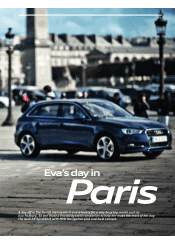 54
54 -
 55
55 -
 56
56 -
 57
57 -
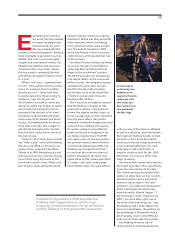 58
58 -
 59
59 -
 60
60 -
 61
61 -
 62
62 -
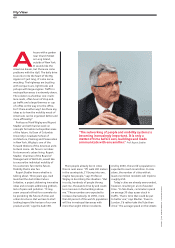 63
63 -
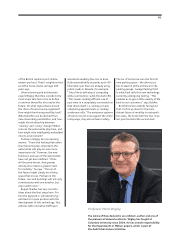 64
64 -
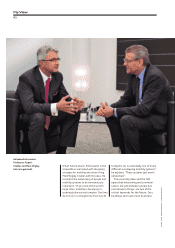 65
65 -
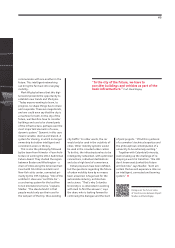 66
66 -
 67
67 -
 68
68 -
 69
69 -
 70
70 -
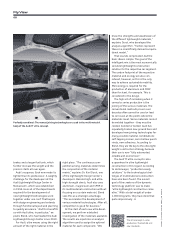 71
71 -
 72
72 -
 73
73 -
 74
74 -
 75
75 -
 76
76 -
 77
77 -
 78
78 -
 79
79 -
 80
80 -
 81
81 -
 82
82 -
 83
83 -
 84
84 -
 85
85 -
 86
86 -
 87
87 -
 88
88 -
 89
89 -
 90
90 -
 91
91 -
 92
92 -
 93
93 -
 94
94 -
 95
95 -
 96
96 -
 97
97 -
 98
98 -
 99
99 -
 100
100 -
 101
101 -
 102
102 -
 103
103 -
 104
104 -
 105
105 -
 106
106 -
 107
107 -
 108
108 -
 109
109 -
 110
110 -
 111
111 -
 112
112 -
 113
113 -
 114
114 -
 115
115 -
 116
116 -
 117
117 -
 118
118 -
 119
119 -
 120
120 -
 121
121 -
 122
122 -
 123
123 -
 124
124 -
 125
125 -
 126
126 -
 127
127 -
 128
128 -
 129
129 -
 130
130 -
 131
131 -
 132
132 -
 133
133 -
 134
134 -
 135
135 -
 136
136 -
 137
137 -
 138
138 -
 139
139 -
 140
140 -
 141
141 -
 142
142 -
 143
143 -
 144
144 -
 145
145 -
 146
146 -
 147
147 -
 148
148 -
 149
149 -
 150
150 -
 151
151 -
 152
152 -
 153
153 -
 154
154 -
 155
155 -
 156
156 -
 157
157 -
 158
158 -
 159
159 -
 160
160 -
 161
161 -
 162
162 -
 163
163 -
 164
164 -
 165
165 -
 166
166 -
 167
167 -
 168
168 -
 169
169 -
 170
170 -
 171
171 -
 172
172 -
 173
173 -
 174
174 -
 175
175 -
 176
176 -
 177
177 -
 178
178 -
 179
179 -
 180
180 -
 181
181 -
 182
182 -
 183
183 -
 184
184 -
 185
185 -
 186
186 -
 187
187 -
 188
188 -
 189
189 -
 190
190 -
 191
191 -
 192
192 -
 193
193 -
 194
194 -
 195
195 -
 196
196 -
 197
197 -
 198
198 -
 199
199 -
 200
200 -
 201
201 -
 202
202 -
 203
203 -
 204
204 -
 205
205 -
 206
206 -
 207
207 -
 208
208 -
 209
209 -
 210
210 -
 211
211 -
 212
212 -
 213
213 -
 214
214 -
 215
215 -
 216
216 -
 217
217 -
 218
218 -
 219
219 -
 220
220 -
 221
221 -
 222
222 -
 223
223 -
 224
224 -
 225
225 -
 226
226 -
 227
227 -
 228
228 -
 229
229 -
 230
230 -
 231
231 -
 232
232 -
 233
233 -
 234
234 -
 235
235 -
 236
236 -
 237
237 -
 238
238 -
 239
239 -
 240
240 -
 241
241 -
 242
242 -
 243
243 -
 244
244 -
 245
245 -
 246
246 -
 247
247 -
 248
248 -
 249
249 -
 250
250 -
 251
251 -
 252
252 -
 253
253 -
 254
254 -
 255
255 -
 256
256 -
 257
257 -
 258
258 -
 259
259 -
 260
260 -
 261
261 -
 262
262 -
 263
263 -
 264
264 -
 265
265 -
 266
266 -
 267
267 -
 268
268 -
 269
269 -
 270
270 -
 271
271 -
 272
272 -
 273
273 -
 274
274 -
 275
275 -
 276
276 -
 277
277 -
 278
278 -
 279
279 -
 280
280 -
 281
281 -
 282
282 -
 283
283 -
 284
284 -
 285
285
 |
 |

of the British capital is just 16 kilo-
meters per hour. That is roughly as fast
as with a horse-drawn carriage 100
years ago.
Urban planning and architecture
expert Wigley therefore considers the
most important task to be to define
a common thread for the road to the
future. On what logical basis should
the cities of tomorrow be organized?
How might functioning mobility look?
What benefits can be derived from
new networking possibilities, and how
might the relationship between
“owning” and “using” change? What
role can the automobile play here, and
how might it be intelligently embedded
into its environment?
Professor Wigley has a surprising
answer. “I have the feeling that rather
than becoming less important, the
automobile will play an even more
im portant role.” However, the new
functions and uses of the automobile
have not yet been defined. “Cities
will become denser. And greater
density also means a greater need
for mobility,” he says. “The car of
the future might simply be a living
space that moves. Perhaps in the
future, cars and buildings will not only
communicate with one another, but
even switch roles.”
Rupert Stadler has very concrete
ideas about the first steps here. For
him the keyword is “piloted driving,”
and Audi is in pole position with the
development of this technology. Test
vehicles with innovative trac jam
assistants enabling the cars to drive
fully automatically at speeds up to 60
kilometers per hour are already using
public roads in Nevada, for example.
“I also like to talk about ‘computing
while commuting’,” adds the Audi CEO.
“This means making ecient use of
your time in a completely connected car
that drives itself, i.e. writing e-mails,
scheduling appointments or making
conference calls.” The assistance systems
of tomorrow not only support the driver
in key ways, they also enhance safety.
The car of tomorrow can also find its
own parking space – the driver just
has to leave it at the entrance to the
parking garage. Garage Parking Pilot
is what Audi calls this new technology
currently undergoing testing. “This
enables us to give a little quality of life
back to our customers,” says Stadler.
But the horizon extends far beyond
that. To firm up ideas for the more
distant future of mobility in metropoli-
tan areas, the brand with the four rings
last year tendered the second Audi
Professor Mark Wigley
The native of New Zealand is an architect, author and one of
the pioneers of deconstructivism. Wigley has taught at
Columbia University since 2004. He has overall responsibility
for the Experiments in Motion project, which is part of
the Audi Urban Future Initiative.
61
